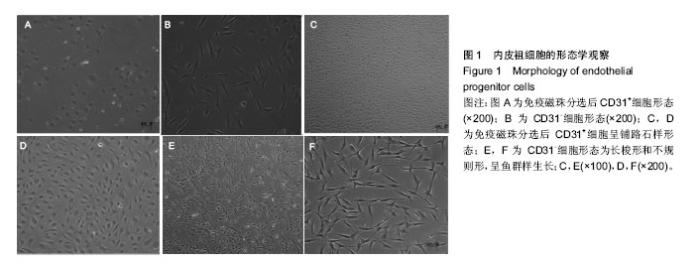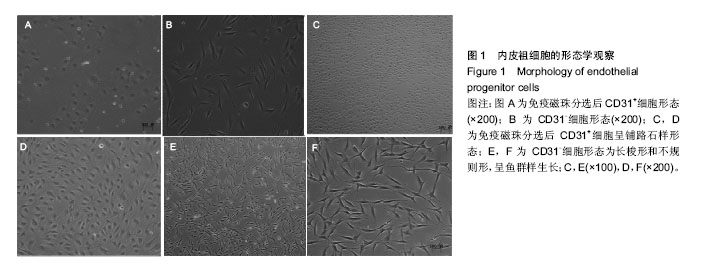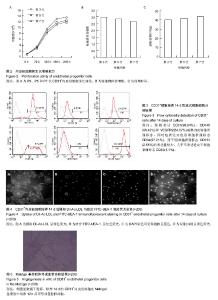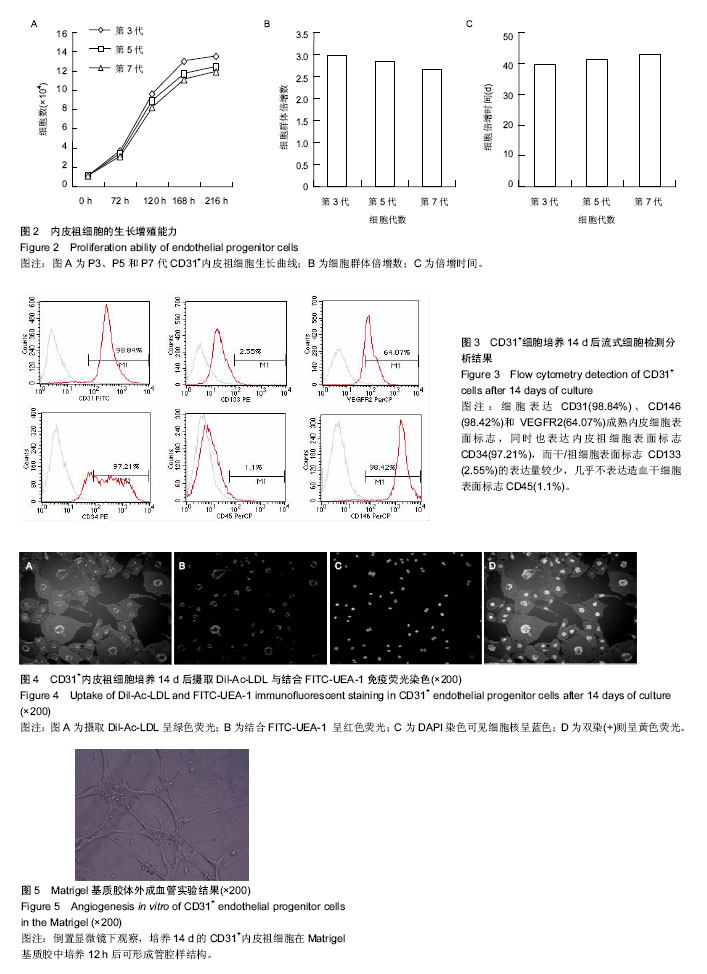| [1] Asahara T, Murohara T, Sullivan A, et al. Isolation of Putative Progenitor Endothelial Cells for Angiogenesis. Science. 1997; 275(5302):964-967.[2] Stein A, Montens HP, Steppich B, et al. Circulating endothelial progenitor cells decrease in patients after endarterectomy. J Vasc Surg. 2008;48(5):1217-1222.[3] Yang J, Ii M, Kamei N, et al. CD34+ cells represent highly functional endothelial progenitor cells in murine bone marrow. PloS One.2011;6(5): e20219.[4] Janic B, Guo AM, Iskander AS, et al. Human Cord Blood-Derived AC133+ Progenitor Cells Preserve Endothelial Progenitor Characteristics after Long Term In Vitro Expansion. PloS One. 2010.5(2): e9173.[5] Zhou L, Xia J, Qiu X, et al. In Vitro Evaluation of Endothelial Progenitor Cells from Adipose Tissue as Potential Angiogenic Cell Sources for Bladder Angiogenesis. PloS One. 2015; 10(2):e0117644.[6] Cheng CC, Chang SJ, Chueh YN, et al. Distinct angiogenesis roles and surface markers of early and late endothelial progenitor cells revealed by functional group analyses. BMC Genomics. 2013;182(14):1-10.[7] Minami Y, Nakajima T, Ikutomi M, et al. Angiogenic potential of early and late outgrowth endothelial progenitor cells is dependent on the time of emergence. Int J Cardiol. 2015; 186:305-314.[8] Cheng SM, Chang SJ, Tsai TN, et al. Differential Expression of Distinct Surface Markers in Early Endothelial Progenitor Cells and Monocyte-Derived Macrophages. Gene Expr. 2013; 16(1):15-24.[9] Sobhan PK, Seervi M, Joseph J,et al. Immortalized Functional Endothelial Progenitor Cell Lines from Umbilical Cord Blood for Vascular Tissue Engineering. Tissue Eng Part C Methods. 2012;18(11):890-902.[10] Medina, RJ, Christina LO, Mark S,et al. Molecular analysis of endothelial progenitor cell (EPC) subtypes reveals two distinct cell populations with different identities. BMC Med Genomics. 2010;3:18.[11] Hager G, Holnthoner W, Wolbank S, et al. Three specific antigens to isolate endothelial progenitor cells from human liposuction material. Cytotherapy. 2013;15(11):1426-1435.[12] Iskander A,Knight RA,Zhang ZG, et al. Intravenous Administration of Human Umbilical Cord Blood-Derived AC133+ Endothelial Progenitor Cells in Rat Stroke Model Reduces Infarct Volume: Magnetic Resonance Imaging and Histological Findings.Stem Cells Transl Med. 2013;2(9):703-714.[13] Murphy MP, Lawson JH, Rapp BM, et al. Autologous bone marrow mononuclear cell therapy is safe and promotes amputation-free survival in patients with critical limb ischemia. J Vasc Surg. 2011;53(6):1565-1574.e1.[14] Tanaka R, Masuda H, Kato S, et al. Autologous G-CSF-Mobilized Peripheral Blood CD34+ Cell Therapy for Diabetic Patients With Chronic Nonhealing Ulcer.Cell Transplantation.2014;23(2): 167-179.[15] Jimenez-Quevedo P,Gonzalez-Ferrer JJ,Sabate M, et al. Selected CD133+ Progenitor Cells to Promote Angiogenesis in Patients With Refractory Angina: Final Results of the PROGENITOR Randomiz 2014;115(11):950-960. [16] Friis T, Haack-Sørensen M, Mathiasen AB, et al. Mesenchymal stromal cell derived endothelial progenitor treatment in patients with refractory angina. Scand Cardiovasc J. 2011;45(3):161-168.[17] Granton J, Langleben D, Kutryk MB, et al.Endothelial NO-Synthase Gene-Enhanced Progenitor Cell Therapy for Pulmonary Arterial Hypertension Novelty and Significance. Circ Res. 2015;117(7):645-654.[18] Yin AH, Miraglia S, Zanjani ED, et al.AC133, a Novel Marker for Human Hematopoietic Stem and Progenitor Cells. Blood. 1997;90(12):5002-5012.[19] Peichev M, Naiyer AJ, Pereira D, et al.Expression of VEGFR-2 and AC133 by circulating human CD34(+) cells identifies a population of functional endothelial precursors. Blood. 2000;95(3):952-928.[20] Case J, Mead LE, Bessler WK, et al.Human CD34+AC133+VEGFR-2+ cells are not endothelial progenitor cells but distinct, primitive hematopoietic progenitors. Experimental Hematology.2007;35(7):1109-1118. |



